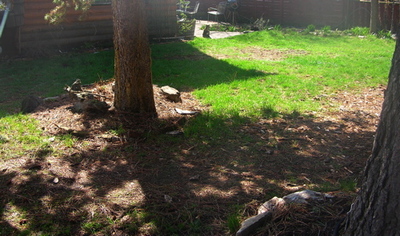It’s been raining pretty much full-time for three days now, sometimes lightly, often steadily, and occasionally with a vengeance. Once or twice there’s been a smattering of hail. And it’s not about to stop; forecasts give it another three or four days before there’s even a hint of sun. I know this is the rainy time of year around here; and I know it’s good for the land, the farmers, etc. etc., but at times I find myself thinking, Enough, already!
Last week we had a couple of glorious days when temperatures were in the high seventies. Lovely! Now, along with endless rain, we have chilly weather: highs in the fifties, lows in the thirties and forties. (All Fahrenheit, of course.) It’s the end of May; I long for warm weather.
Still, living for the first time in a dry land, I cannot forget the value of water. Some seasons I check the rain index on the back of the newspaper’s first section every day, comparing what’s fallen this month to the month’s norm, then looking at the numbers for the year, what’s fallen and what’s normal. That’s four numbers for Bozeman. Then I check the numbers for Belgrade, fifteen miles west. Fifteen miles away and about five inches drier, because it’s out in the wide valley, while we’re tucked right up against the foothills of the Bridger mountains, where the clouds dump their loads of moisture before rising over the peaks and moving east.
Like much of the west throughout North America, we’ve had years of drought. My little corner has been luckier than most, but the threat of drought is still real. We watch the precipitation levels, and the river-flow levels, and we watch the snow-pack, because the snow-pack feeds the rivers, and the rivers feed the land, and the land feeds us.
If the snow-pack is low, that means a dry year. If a surge of hot weather comes early and melts the snow too quickly, that means floods. If the hot weather holds, melting the entire snow-pack by the end of June, that means floods and a dry year.
Winter banks our summer’s water in the snow-pack; we need a slow, frugal spring, releasing that wealth gradually. If it rushes from the mountains, it is gone, like money flung to the winds.
So I cannot entirely begrudge the rain, and the cold, which I know means that what falls as rain here falls as snow higher up.
Then too, when the clouds part and the mountains come briefly into view, streaked with white nearly to their knees, that’s a loveliness not to be disputed or denied.


 Subscribe to RSS feed
Subscribe to RSS feed


